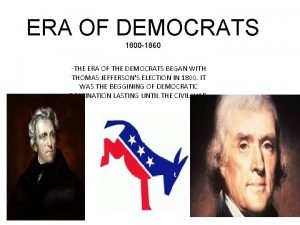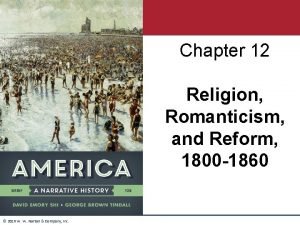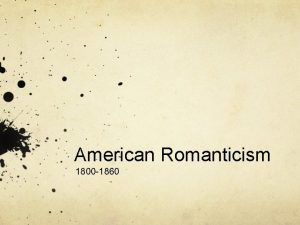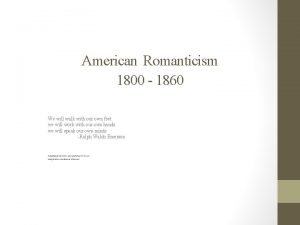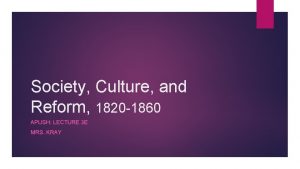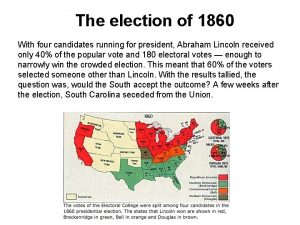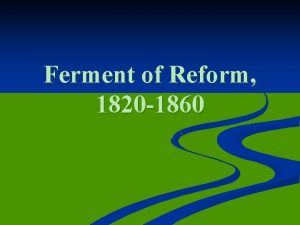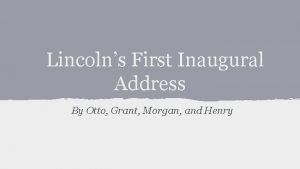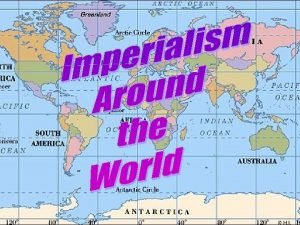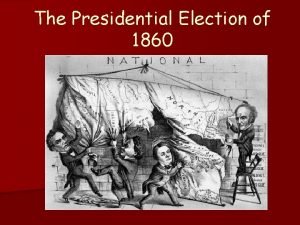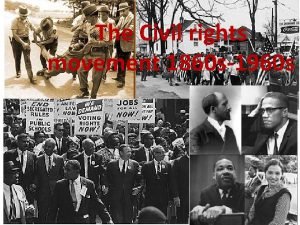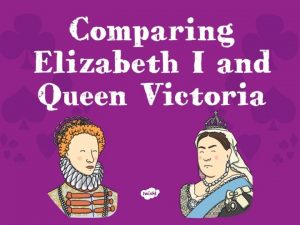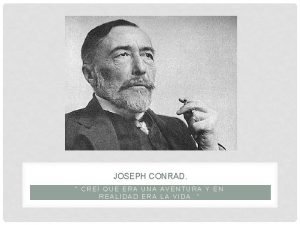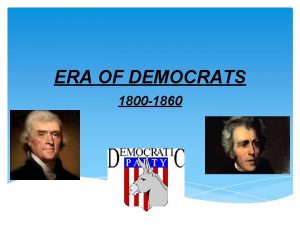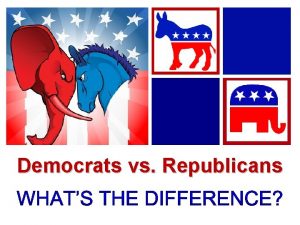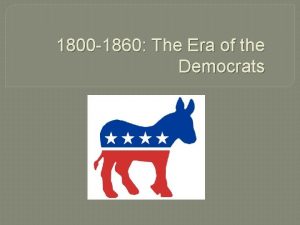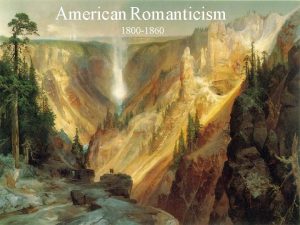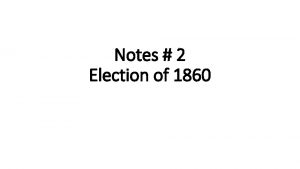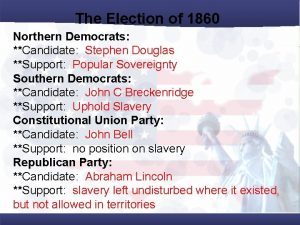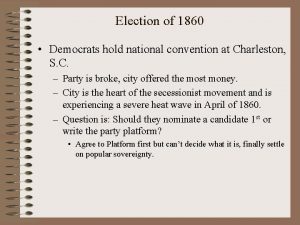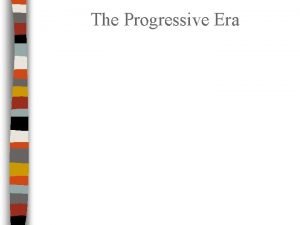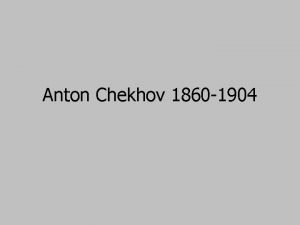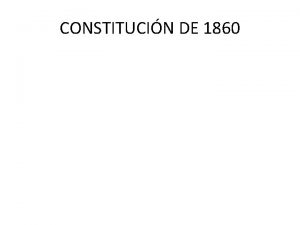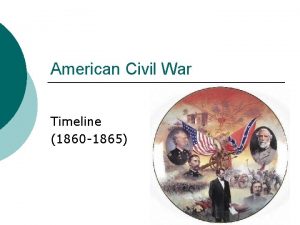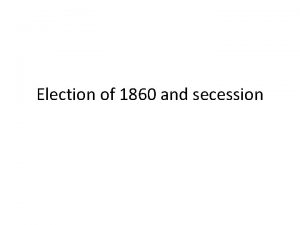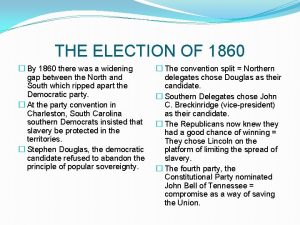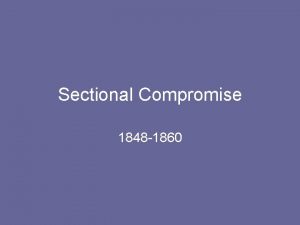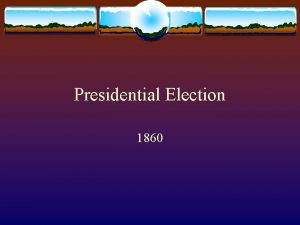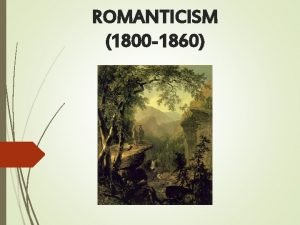ERA OF DEMOCRATS 1800 1860 THE ERA OF




























- Slides: 28

ERA OF DEMOCRATS 1800 -1860 -THE ERA OF THE DEMOCRATS BEGAN WITH THOMAS JEFFERSON'S ELECTION IN 1800. IT WAS THE BEGGINING OF DEMOCRATIC DOMINATION LASTING UNTIL THE CIVIL WAR.

MAJOR EVENTS THAT TOOK PLACE. - DEMOCRATIC PARTY -LED BY JACKSON, WERE A COMBINATION OF SMALL FARMERS, DEBTORS, FRONTIER PIONEERS, AND SLAVEHOLDERS. -THE JACKSONIAN DEMOCRACY PRODUCED THREE FUNDAMENTAL CHANGES. 1) VOTING RIGHTS FOR ALL WHITE MALES. 2) A HUGE INCREASE IN THE NUMBER OF ELECTED OFFICES AROUND THE COUNTRY. 3) SPREAD OF SPOILS SYSTEM, THE PRACTICE OF AWARDING PUBLIC OFFICES, CONTRACTS, AND OTHER GOVERNMENTAL FAVORS TO THOSE WHO SUPPORTED THE PARTY IN POWER. WHIG PARTY - -WAS LED BYTHE WIDELY POPULAR HENRY CLAY AND DANIEL WEBSTER. -CONSISTED OF A LOOSE COMBINATION OF EASTERN BANKERS, MECHANTS AND INDUSTRIALISTS, AND MANY OWNERS OF LARGE SOUTHERN PLANTATIONS. THE WHIGS WERE OPPOSED TO THE BELIEF OF JACKSONIAN DEMOCRACY AND STRONGLY SUPPORTED A HIGH TARRIF. -ELECTED TWO WAR HEROES TO THE WHITE HOUSE; WILLIAM HENRY HARRISON (1840) AND ZACHARY TAYLOR (1848).

SIGNIFICANT ENDING/ NEW BEGINNING -WHIGS/DEMOCRATS -BY THE 1850'S, THE GROWING CRISIS OVER SLAVERY SPLIT BOTH MAJOR PARTIES. LEFT LEADERLESS BY THE DEATHS OF STATESMEN HENRY CLAY AND WILLIAM WEBSTER, THE WHIG PARTY FELL APART. -MEANWHILE, THE DEMOCRATIC PARTY SPLIT INTO TWO SHARPLY DIVIDED CAMPS, IN THE NORTH AND SOUTH. -REPUBLICANS- -A GROUP THAT AROSE TO COMPETE FOR SUPPORTERS AMONG THE FORMER WHIGS AND DEMOCRATS, THE REPUBLICAN PARTY WAS THE MOST SUCCESSFUL. -FOUNDED IN 1854, IT ATTRACTED MANY WHIGS AND ANTISLAVERY. -REPUBLICANS NOMINATED THEIR FIRST PRESIDENTIAL CANDIDATE, JOHN C. FREMONT, IN 1856; AND ELECTED ABRAHAM LINCOLN AS THEIR FIRST PRESIDENT IN 1860. -REPUBLICAN PARTY BECAME THE ONLY PARTY IN THE HISTORY OF AMERICAN POLITICS TO MAKE THE JUMP FROM TIRD -PARTY TO MAJOR-PARTY STATUS.


• The election of Abraham Lincoln and the start of the Civil War signaled the beginning of 75 years of Republican party supremacy • Rose as an anti-slavery party and supported by Northern and Western farmers, businesses, and African Americans. • Republicans won all but four presidential elections (Grover Cleveland : elected in 1884 and 1892 and Woodrow Wilson: elected in 1912 and 1916) • Democrats during this period controlled the South and rebuilt their support from there

• Election of 1896 was critical in the development of the two party system. CANDIDATES William Jennings Bryan (D) Supported Free silver William Mc. Kinley (R) Supported gold standard • Mc. Kinley won the election and the Republicans regained the presidency. • This victory helped the republicans draw support from a wider portion of the electorate-the people eligible to vote. • Democrats also made an impression during this election • William Jennings Bryan pushed party politics back toward economics and away from sectionalism-devotion to the interests of one section of a country.

• Election of 1912 • Worst Republican setback of the era • Republicans renominate President William Howard Taft • Former Republican President Theodore Roosevelt denied nomination, leaving the Republicans to become the candidate of his “Bull Moose” Progressive Party • Republican vote was split between Taft & Roosevelt helping Democrat Woodrow Wilson win the presidency • Wilson’s win was just lucky and Republicans take office again in 1920 (Warren Harding), 1924 (Calvin Coolidge), 1928 (Herbert Hoover)

#3 1932 -1968 Reem Saleh Ayeh Habhab Mouhamed Chahine

The Election of 1932 • • Franklin Delano Roosevelt won the presidential election. The Democrats were now back in power at the national level. His economic and social welfare programs strengthened his electoral base, which included southerners, small farmers, labor and political organizations, and African Americans. Won reelection in 1936 and served a third term in 1940 and another term during World War II; the only president to serve four terms. Died in 1945 from a brain hemorrhage.

Following FDR’s Death • • • Vice President Harry Truman completed Roosevelt’s term. Was elected for a term of his own in 1948 Known for: -Marshall Plan: aimed to aid Europe to prevent the spread of Communism after WWII - Truman Doctrine: the United States would support Greece and Turkey with economic and military aid to prevent them from falling into communism - Attacks on Japan: made the decision to use the atomic bomb on Hiroshima and Nagasaki to save U. S soldiers during WWII

Republicans Regain Office • • • In 1952, war hero Dwight Eisenhower is elected into office as the 34 th president Established NATO, and was the first US president to be an ally of the organization Welcomed Alaska and Hawaii as official states Signed Civil Rights Act Holds office for only one full term

The Election of 1960 • • • John F. Kennedy brought the Democrats back to power when he won the election over Richard M. Nixon. Is credited for most Civil Rights reform in public places Shot and killed by Lee Harvey Oswald in 1963. Vice President Lyndon B. Johnson completed his term and served a term of his own in 1964. Richard Nixon scandalously took office in 1968

1968 -Present Era Of Divided Government S

Era Of Divided Government S Neither the Republicans nor the Democrats hold more power. The power is consistently changing towards the two political parties.

Ideological partics Are based on a set of beliefs on social, economic and political. Most have Marxist ideas examples are socialist, socialist labor, socialist worker and communist parties

Libertarian party's Libertarian party believe in Substantially reduce the size and intrusiveness of government and cut all taxes. � Let peaceful, honest people offer their goods and services to willing consumers without a hassle from government. � Let peaceful, honest people decide for themselves what to eat, drink, read, or smoke and how to dress, medicate themselves, or make love, without fear of criminal penalties. � The U. S. government should defend Americans and their property in America and let the U. S. taxpayer off the hook for the defense bill of wealthy countries like Germany and Japan. � �

Single-Issue Parties A Single Issue Party is a political party who campaigns for office on the basis of a single issue.

Examples Of A Single-Issue Party § § § The Free Soil Party opposed the spread of slavery in the 1840 s and 1850 s. The American Party, also called the “Know Nothings, ” opposed Irish-Catholic immigration in the 1850 s. The Right to Life Party opposes abortion today.

What Happened To The Single. Issue Parties? Most of the single-issue parties have faded into history. They died away as events have passed them by, as their themes have failed to attract voters, or as one or both of the major parties have taken their key issues as their own.

Pictures Of A Single-Issue Party

~ By Sabrina Saad, Mariam Kassem, Ali Aljanabi

Parties rooted in poor economic times, lacking a clear ideological base, dissatisfied with current conditions and demanding better times. Formed in economic discontent Considered bankers, the railroads, and foreign imports their enemies.

Greenback Party- appealed to struggling farmers, calling for free coinage of silver, federal regulation of the railroads, an income tax, and labor legislation. Populist Party- demanded public ownership of railroads, telephone and telegraph companies, lower tarrifs, and adoption of the initiative and referendum.

Tea Party- party that strikes against paying many taxes they feel is “pointless” and advocates reducing the U. S. national debt and federal budget deficit by reducing U. S. government spending and taxes.

W S E … I AS T R E D A I P N W R O TE Y NO T M I L G P S E I’ V E O U T

SO, WHAT IS A SPLINTER PARTY? Those who have split away from one of the major parties are known as splinter parties. Most of the more important minor parties in politics have been splinter parties.

HOW DO SPLINTER PARTIES FORM? Most splinter parties have formed around a strong personality. When a popular candidate is not chosen to represent a certain political party, or doesn’t agree with a certain aspect of his party, he can start his own “splinter party”. Splinter parties are significant because, although they most likely will not win, they make send a message from all of the votes they do manage to rally up.

TEDDY ROOSELVELT’S BULL MOOSE Among the leading groups that have defined themselves as splinter parties are Teddy Roosevelt and his “Bull Moose” party, who left the democratic party in 1912. Although he didn’t win the election, Teddy Roosevelt made a large dent in the ballots.
 Whig party beliefs
Whig party beliefs Chapter 12: religion, romanticism, and reform, 1800–1860
Chapter 12: religion, romanticism, and reform, 1800–1860 American romanticism 1800 to 1860 worksheet answers
American romanticism 1800 to 1860 worksheet answers American romanticism 1800 to 1860 worksheet answers
American romanticism 1800 to 1860 worksheet answers Romantic period american literature
Romantic period american literature American romanticism 1800 to 1860 worksheet answers
American romanticism 1800 to 1860 worksheet answers Arthur and lewis tappan apush
Arthur and lewis tappan apush Map of 1860
Map of 1860 Border states in 1860
Border states in 1860 Decreto 1860 de 1994
Decreto 1860 de 1994 Second great awakening
Second great awakening Election of 1860 pie chart
Election of 1860 pie chart Puffing billy aspirateur
Puffing billy aspirateur South carolina 1860
South carolina 1860 South africa 1860
South africa 1860 The election of 1860 definition
The election of 1860 definition 1860
1860 Victorian era vs elizabethan era
Victorian era vs elizabethan era Creí que era una aventura y en realidad era la vida
Creí que era una aventura y en realidad era la vida Vi uma estrela tão alta
Vi uma estrela tão alta Baroque music quiz
Baroque music quiz Quá trình desamine hóa có thể tạo ra
Quá trình desamine hóa có thể tạo ra Môn thể thao bắt đầu bằng từ đua
Môn thể thao bắt đầu bằng từ đua Công thức tiính động năng
Công thức tiính động năng Hát kết hợp bộ gõ cơ thể
Hát kết hợp bộ gõ cơ thể Khi nào hổ mẹ dạy hổ con săn mồi
Khi nào hổ mẹ dạy hổ con săn mồi Thế nào là mạng điện lắp đặt kiểu nổi
Thế nào là mạng điện lắp đặt kiểu nổi Dot
Dot Thế nào là sự mỏi cơ
Thế nào là sự mỏi cơ
